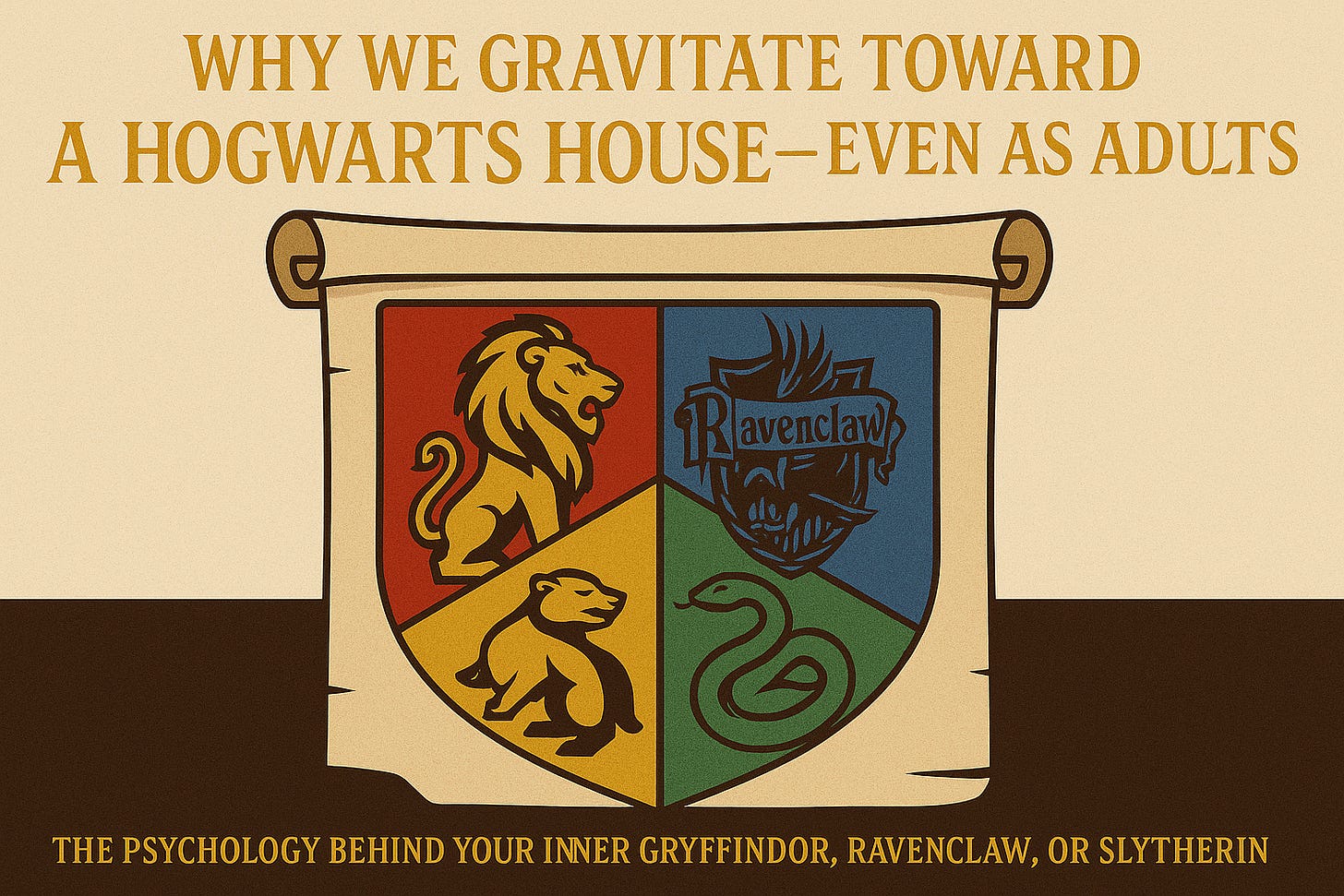What your Hogwarts house affiliation says about you
Why We Gravitate Toward a Hogwarts House—Even As Adults
As a native of Orlando, one of the things I do while exercising my Universal Studios annual pass is to see, while walking around the theme park, who is wearing which Hogwarts house symbols. And I mean adults, not kids.
Why would one person choose one house to join more than another, and what drives that association?
The Psychology Behind Your Inner House Choice
Every Harry Potter fan knows the ritual: the Sorting Hat is placed on your head, and it shouts the house where you belong.
Gryffindor!
Ravenclaw!
Hufflepuff!
Slytherin!
But here's the deeper question: Why do so many people feel emotionally attached to one house more than the others? And what does that say about how we see ourselves—or want to be seen?
What the Four Houses Represent
Each Hogwarts house isn't just a fictional construct—a values-based identity framework, a personality filter, and a psychological mirror.
Here's a quick guide:
These aren't just school traits. They're life archetypes, representing fundamental human characteristics and behaviors that we all possess to varying degrees. And when we gravitate toward one, it often reflects our aspirations, values, or self-perception.
Often, it's not about who we are—but who we wish we were. Our house affiliation can reflect our aspirations and the qualities we admire in others.
A quiet introvert might pick Gryffindor as an aspirational badge of courage.
A misunderstood teen may resonate with Slytherin's survivalist edge.
A curious thinker finds a home in Ravenclaw.
Someone tired of ego-driven environments may cling to Hufflepuff's quiet integrity.
These houses let us align with a narrative we want to live out—especially in moments of uncertainty, transition, or growth.
Why Do We Want Others to Know Our Hogwarts House?
It's one thing to take a quiz. It's another to declare on your profile, hoodie, or Zoom background.
So why do we broadcast our house?
1. It's a shorthand for identity.
Saying "I'm a Ravenclaw" communicates more than a trait—a self-curated story—a statement of what you value: intellect, curiosity, originality.
2. It signals belonging.
The houses are more than groups; they are tribes. When someone proudly declares they're a Hufflepuff, they're naming their traits and their people, community, and home.
3. It's aspirational.
Most people don't just reflect their house—they select it to project a version of themselves. Gryffindors aspire to be brave. Slytherins wish to own ambition. It's not just a quiz result—it's a powerful message of aspiration and self-improvement.
4. It invites connection.
House declarations spark conversation. "Really? You don't seem like a Slytherin…" It becomes a form of low-stakes self-expression that leads to high-engagement dialogue. For instance, a Gryffindor might wear their house colors to show their bravery, while a Hufflepuff might display their house emblem to express their loyalty.
It's not just about psychology; it's also about fun. These houses have a playful element that invites people to explore serious identity themes lightheartedly without fear of judgment. There's safety in metaphor. These houses allow people to explore serious identity themes—who we are, admire, and want to become—without judgment.
Here's a radar chart comparing all four houses across seven defining dimensions of personality and values.
Feel free to download and share it with your fellow housemates.
The House You Choose Reflects the Story You Tell
Maybe you've always been a Ravenclaw. You may be a Gryffindor at work and a Hufflepuff at home. Your inner Slytherin only comes out when you need to close the deal.
That's the brilliance of the house metaphor—it evolves with you.
It lets you play with identity, values, and narrative in a personal and shared way.
And in a world increasingly obsessed with labels and tribes, maybe a fictional Sorting Hat is still one of our most insightful mirrors. Or perhaps it's just a story you want to tell yourself.
So tell me … what house do you belong in—and why?
By the way, I noticed a considerable increase in Slytherin - what does that show?






